Many people are confused about Ireland vs Northern Ireland. I often get asked, “what is the difference between Ireland and Northern Ireland?”. Is there a difference? Are they not one and the same? They are not and, to help clarify things for you, here is an explanation as to why there is a difference and what exactly the differences are between the two.
The island of Ireland is composed of two countries, Ireland and Northern Ireland. Ireland, or the Republic of Ireland, constitutes the majority and southern part of the island, while Northern Ireland is located in the northeast of the island of Ireland. And note that “Southern Ireland” is not a term that exists in Ireland. You simply call the part of the country that is not Northern Ireland as Ireland or the Republic of Ireland.
The reason for them being two separate countries is briefly discussed further on but be warned. This can be quite a contentious topic when brought up with people who live in the two countries. It stems from the long history of Ireland and Northern Ireland.
So, let’s dive into the difference between Northern Ireland and the Republic of Ireland.
Main differences between Ireland and Northern Ireland
As mentioned, the main difference between Ireland and Northern Ireland is that they are two separate countries. The Republic of Ireland, often just denoted as Ireland, is an independent sovereign state, while Northern Ireland has been a part of the United Kingdom since the 3rd of May 1921.
Ireland is a member of the European Union (EU), while Northern Ireland is not as a result of Great Britain leaving the EU (called Brexit).
There is no physical border between Ireland and Northern Ireland, having been abolished as part of the Good Friday Agreement. While there had been some worries about the fate of the invisible border between the two countries with Brexit, this is no longer a worry as there is an agreement that the physical border will not be reintroduced as a result of Brexit. Goods and people can travel between Ireland and Northern Ireland without checks.
Northern Ireland will still follow many EU rules and as Ireland is a member of the EU, this allows for the invisible border to remain. However, there will be a regulatory border between the Republic of Ireland and England and Wales, and one between Northern Ireland and the rest of Great Britain. This information was taken from here. You can find a further explanation in this article.
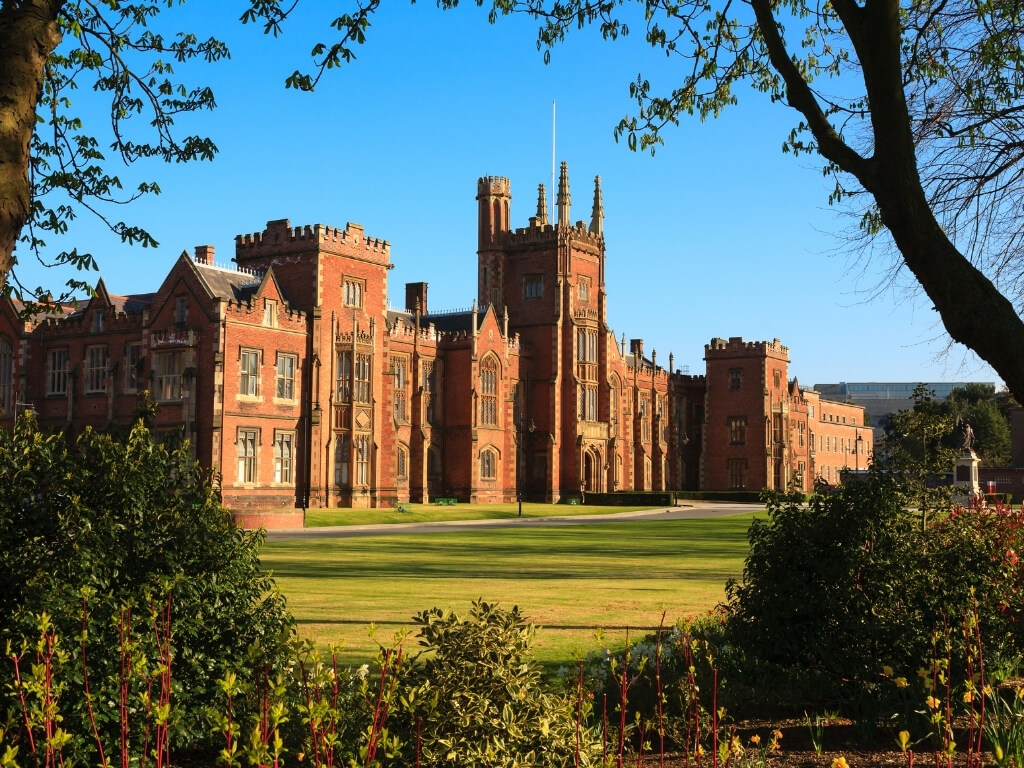
Other key differences between the Republic of Ireland and Northern Ireland
As already discussed the Republic of Ireland and Northern Ireland are two separate countries. The capital of Northern Ireland is Belfast, while the capital of Ireland is Dublin. Both have international airports and good public transport systems within the cities, making them popular with tourists.
The counties of Ireland and Northern Ireland total 32. Ireland has 26 counties while there are 6 in Northern Ireland.
26 counties – Republic of Ireland: Carlow, Cavan, Clare, Cork, Donegal, Dublin, Galway, Kerry, Kildare, Kilkenny, Laois, Leitrim, Limerick, Longford, Louth, Mayo, Meath, Monaghan, Offaly, Roscommon, Sligo, Tipperary, Waterford, Westmeath, Wexford and Wicklow.
6 counties – Northern Ireland: Antrim, Armagh, Derry, Down, Fermanagh and Tyrone.
Ireland and Northern Ireland map
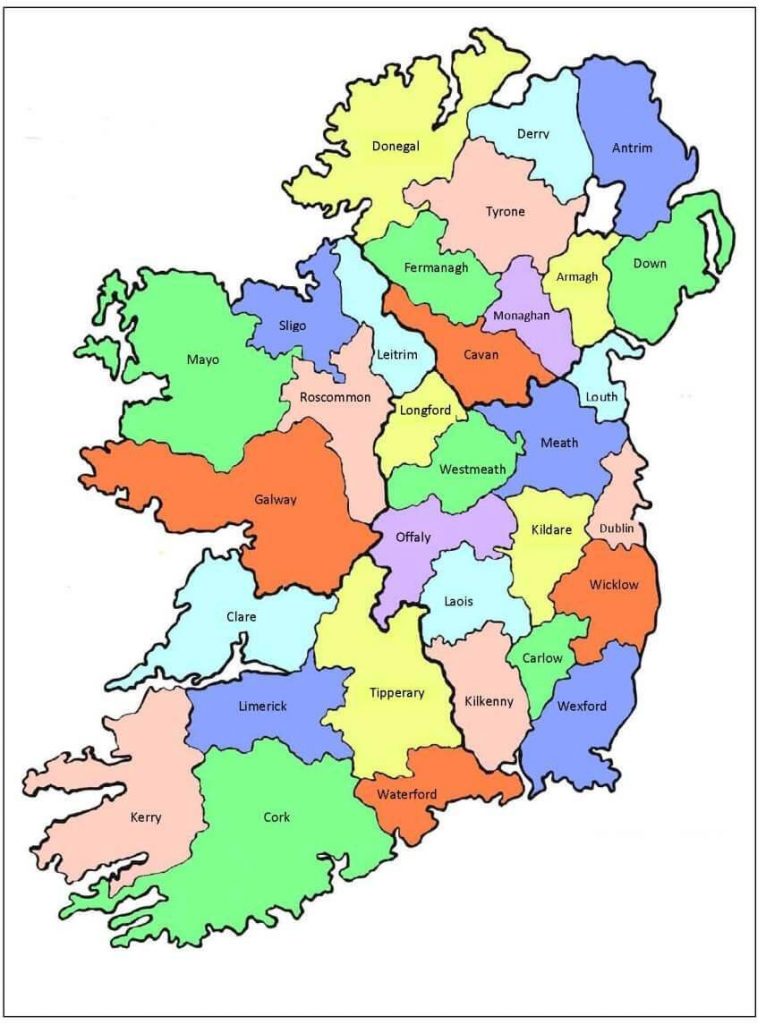
Each country has its own flag. The flags of Ireland and Northern Ireland are very different. The flag of the Republic of Ireland is the Tricolour of green, white and orange. The official Northern Ireland flag is the Union Jack of Great Britain. The Northern Ireland government used to use the Ulster Banner from 1953 until 1973 when both the government and parliament were abolished. However, it is still occasionally used by some loyalists and unionists.
If you travel from Ireland to Northern Ireland, you will find road signs change as you cross the Ireland/Northern Ireland border. This is because Ireland (or the Republic) use the metric measurement system while Northern Ireland still uses the imperial system. Speed limits and place distances in Ireland are shown in kilometres but in Northern Ireland, they are shown in miles.
The island of Ireland is 32,599 square miles or 84,431 square kilometres. The area of the Republic of Ireland is 27,136 square miles or 70,238 square kilometres while the area of Northern Ireland is 5,463 square miles or 14,148 square kilometres.
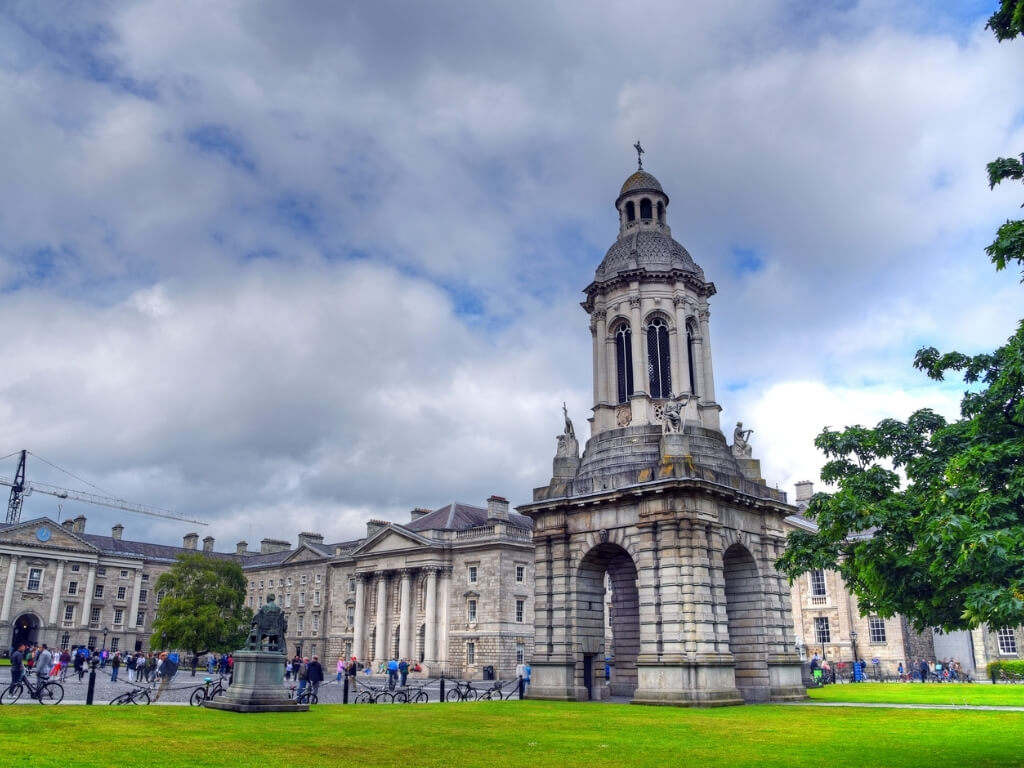
Ireland vs Northern Ireland – Other differences
Here are some other differences between the two countries of Ireland.
The population of Ireland and Northern Ireland combined is approximately 6.6 million. Ireland has a population of 4.8 million, while Northern Ireland has a population of 1.8 million.
Ireland and Northern Ireland have different currencies. Ireland has the euro, being part of the Eurozone, while Northern Ireland has the pound. Some places in Northern Ireland will accept euros as payment and will usually have a sign saying “Euros Accepted”. However, you cannot use the pound for payment in the Republic of Ireland.
The Republic of Ireland is a ‘parliamentary constitutional republic’ whose Head of State is the President of Ireland, currently Michael D Higgins. The president is elected by the people of Ireland and they, in turn, nominate the Taoiseach. The Head of Government is the Taoiseach (or Prime Minister) and is responsible for appointing members of government. The Executive Authority of the country is given to the Taoiseach, Tánaiste (deputy PM) and the members of the Dáil (Assembly of Ireland). The legislature is powered by the National Parliament known as the Oireachtas which constitutes Dáil Éireann, Seanad Éireann, and the 4 Courts of Ireland – District, Circuit, High and Supreme courts.
Northern Ireland is a part of the United Kingdom whose Head of State is the British Monarch, now King Charles III. Northern Ireland has a devolved government headed by the First Minister and Deputy Minister. The legislature is powered by the Northern Ireland Assembly with a Speaker who presides over the NI Assembly with 3 deputy speakers. Judicial Power is held by the Lord Chief Justice of NI and 3 Courts – the Supreme Court of the UK, the Court of Judicature and the High Court comprising the Court of Appeal, the Crown Court and the County Courts.
The police force in Ireland is the Garda Síochána who are unarmed, while the Police Service of Northern Ireland serves Northern Ireland and they are armed with Glock 17 handguns.
As for languages, English is the official language of Northern Ireland, while the Republic of Ireland has two, English and Gaeilge (Irish). English is the predominant language in Ireland except in Gaeltacht areas where Irish is the first language of the people. You will find signs in the Republic of Ireland using both, particularly for road signs, place name and buildings.
The island of Ireland is a mostly Christian island in terms of religion. The Republic of Ireland is a predominantly Catholic country. However, Northern Ireland has a higher proportion of Protestant Christians.
The accents in both countries are also very different. The accent in Northern Ireland has influences from the Republic, Scotland and England and is noticeably different from accents of the south.
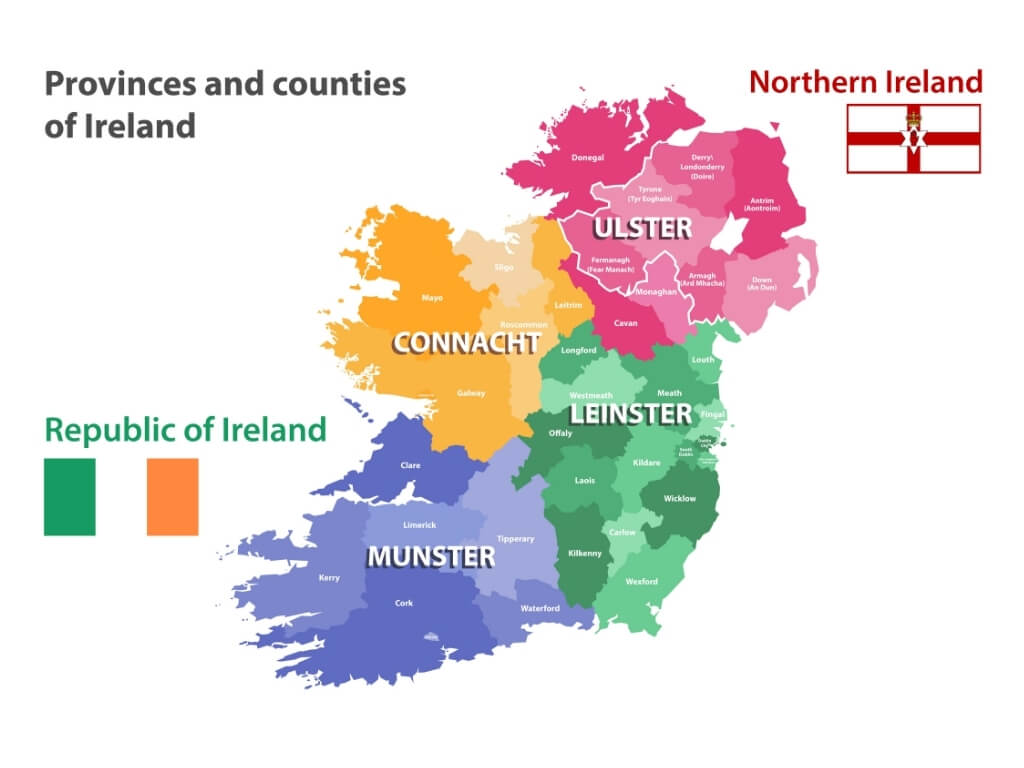
Ireland and Northern Ireland history
To understand why Ireland and Northern Ireland are separate countries, you need to delve into the history books somewhat and go back over 800 years ago. This history gives an insight into the division and the Ireland/ Northern Ireland conflict of modern times.
The ‘800 years’ of British rule began with the Norman invasion of Ireland. In 1169, English barons, led by Strongbow, originally came to the aid of the King of Leinster in a squabble. Two years later King Henry II landed with substantial troops forcing Strongbow and remaining Gaelic Irish lords to accept him as their King.
In 1534 King Henry VIII declared himself Head of the Church of England and with this, King of Ireland. Irish Lords led by Lord Thomas Fitzgerald attempted a rebellion against the crown which was swiftly quashed. Henry also ordered the dissolution of the monasteries after his spat with the Catholic Pope and passed church land to the new Anglican Church (Protestant).
In 1594 the Earl of Tyrone began a rebellion in Ulster which lasted until his defeat and surrender in 1603, a period known as the Nine Years War. This signalled the end of Gaelic Ireland and a renewed colonisation through plantations, where Loyal Protestants from Scotland and England were given confiscated lands. This sowed the bitter seeds of division that linger today.
In 1695 the Penal Laws were introduced in which Catholics were stripped of basic rights which included a prohibition from owning a horse, marrying outside their religion and buying or inheriting property. At the same time Irish music, culture and education were banned in an effort to eradicate Catholicism.
After several more rebellions against British Rule, the Act of Union was passed in 1801. This united Ireland politically with Britain. Irish Parliament was dissolved and direct rule from Westminster introduced.
In 1829 Daniel O’Connell achieved the Catholic Emancipation Act, reinstating some rights to Catholics. Although voted as a Member of Parliament, he was unable to take his seat because he was Catholic. He went on to become the first Lord Mayor of Dublin.
Between 1845 and 1851 the Great Famine arrived in Ireland. Potato crops failed due to blight and over 1 million died, and many more emigrated due to the famine. Food aid was opposed by the British government and much of the remaining good crops were exported abroad, most of it to Britain. The Great Famine left a huge scar, both culturally and socially, on the Irish people.
However, changing times were afoot. Between 1886 and 1895 the British Prime Minister, William Gladstone, tried to introduce Home Rule in the House of Commons, which was initiated by Charles Stewart Parnell. This was a demand that Ireland’s governance be returned to home soil in Ireland from Westminster. This was opposed by a loyalist group that founded the Ulster Volunteer Force (UVF), whose members swore to resist any attempt to impose Home Rule on Ireland.
Home Rule was eventually passed in 1914 but was put on hold due to the outbreak of World War I. With Britain at war, rebellion factions in Sinn Féin, the Irish Volunteer Force and the Irish Citizens’ Army saw their chance to rise up against the Crown.
On Easter Sunday in 1916, a group of Republicans took the General Post Office in Dublin, led by Pádraig Pearse, who declared Ireland a republic. After 6 days of fighting, the Republicans surrendered and they were taken to Kilmainham Gaol where 15 of them were executed. Support for Republicans grew swiftly following this event.
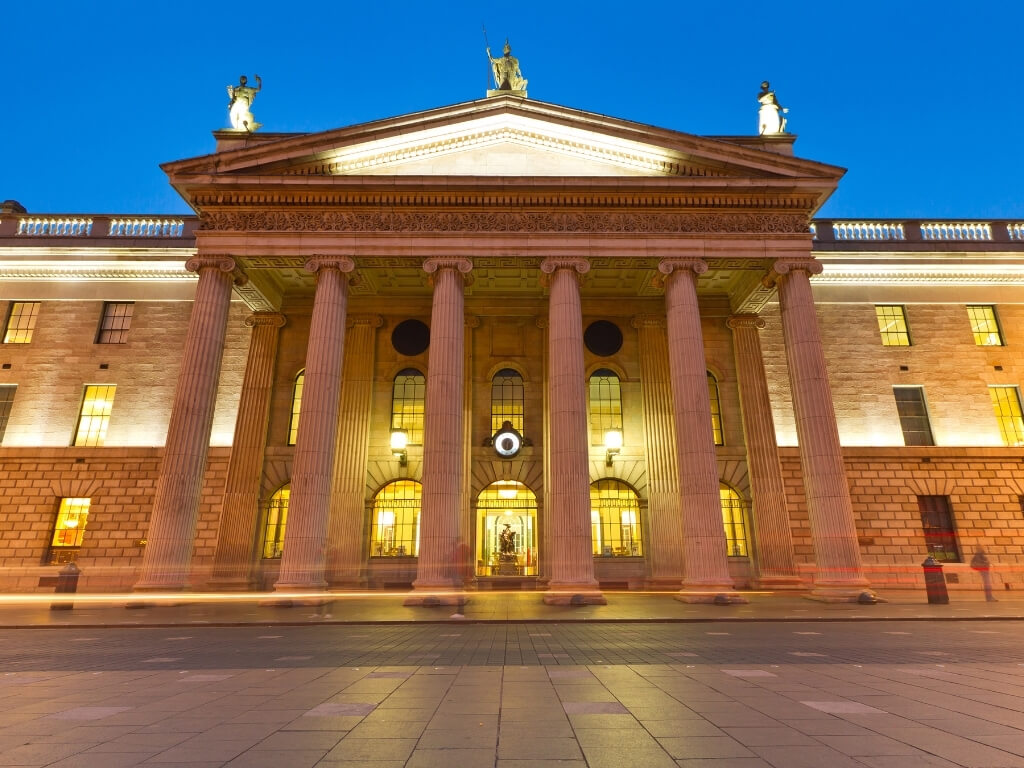
In 1918 the Republicans under the banner of Sinn Féin won a large majority of Irish seats, declared independence and formed the first Dáil Éireann. This was an act of war and the Irish War of Independence ran from 1919 to 1921, until the Anglo-Irish Treaty was signed. This created the Irish Free State of 26 counties and the 6 counties of Ulster which remained in the UK.
The Treaty was imperfect. Some believed it was a stepping stone towards full independence, while some saw it as a betrayal of Republican ideals and a cessation of opposition to British Rule. However, the Irish Free State eventually became the Republic of Ireland.
In 1969 marches in Derry by the Northern Ireland Civil Rights Association were disrupted by Loyalist attacks and heavy-handed police action, and this marked the beginning of what is known as The Troubles, a 30-year long between the Irish Republican Army (IRA) and Loyalist paramilitaries.
A cease-fire was reached with the signing of the Good Friday Agreement. A devolved government was formed in Northern Ireland which, despite being suspended numerous times, is still in force today. It is this cease-fire that was at risk with Brexit and Northern Ireland inhabitants were fearful that if a physical or ‘hard’ border was reintroduced, then the IRA would take up arms again and the Troubles would recommence.
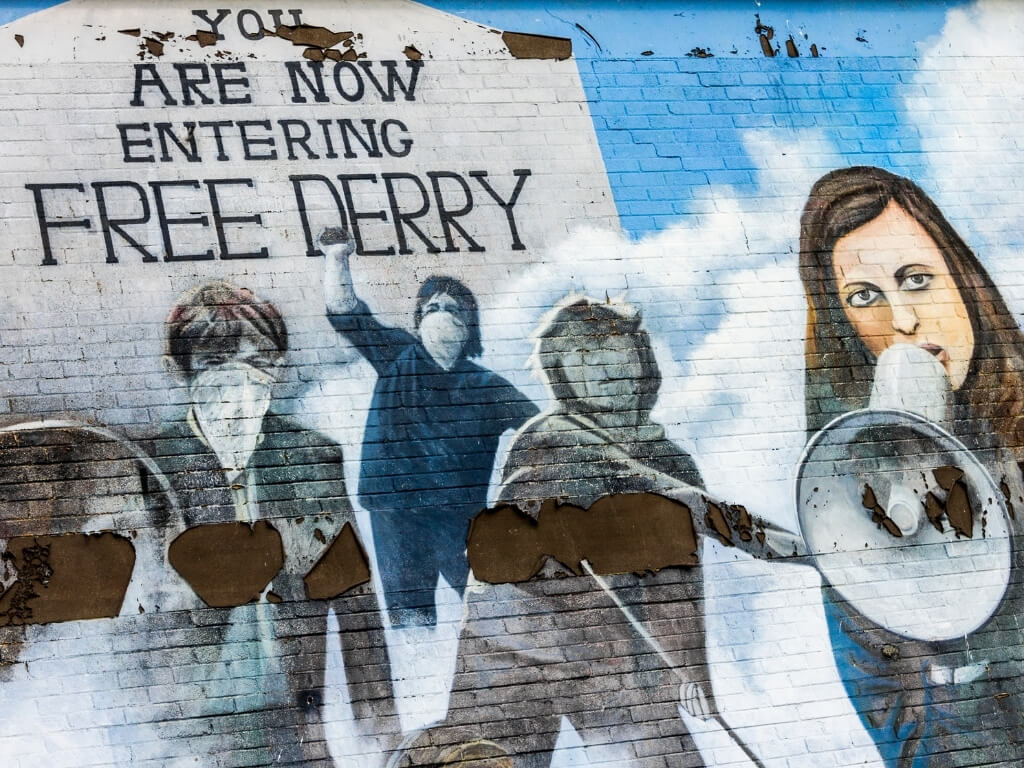
Although there is more to the history of British Rule on the island of Ireland, this gives a brief account (if you can call it that) of how the once united island of Ireland became partitioned due to strong cultural, religious and government divergence and the conflicts that arose as a result. The island of Ireland is now an island that is home to two countries, but there are many that hope that one day there will be a unified Ireland once more. I hope this also explains why the topic is a contentious one for some of those living in both the Republic of Ireland and Northern Ireland alike.
FAQ’s about Ireland vs. Northern Ireland
Northern Ireland is a home country or region of the United Kingdom. But the Republic of Ireland is not part of the UK. It is an independent country.
Technically, no. Northern Ireland is a home country (or region) of the United Kingdom. It is not a country in its own right, nor has it ever been. It is a constituent part of the United Kingdom but is not a country, state, kingdom or nation.
While there is no physical border between Ireland and Northern Ireland and no passport or customs checks, there is an invisible border. You will know you have crossed the border, predominantly by the road signs. Road signs change when you cross from Ireland into Northern Ireland. Speed limits and distance signs in Northern Ireland are shown in miles, while they are in kilometres in the Republic of Ireland. You might see signs saying “Welcome to Northern Ireland/town in NI” or “You are now entering NI/town in NI”.
Unless you have specifically told your hire car company that you will be crossing the border, then no. As they are two separate countries, the hire car companies need to ensure the insurance premium covers driving in both countries and this can add significant cost to your rental car budget. And don’t think you can just slip through unnoticed. If the car is fitted with a tracker, the rental car company will be notified and you will be charged a premium for crossing the border without telling them beforehand.
If you have been wondering about the difference between Northern Ireland and Ireland, what those differences are and why, I hope you have found this post useful in explaining and answering those questions.
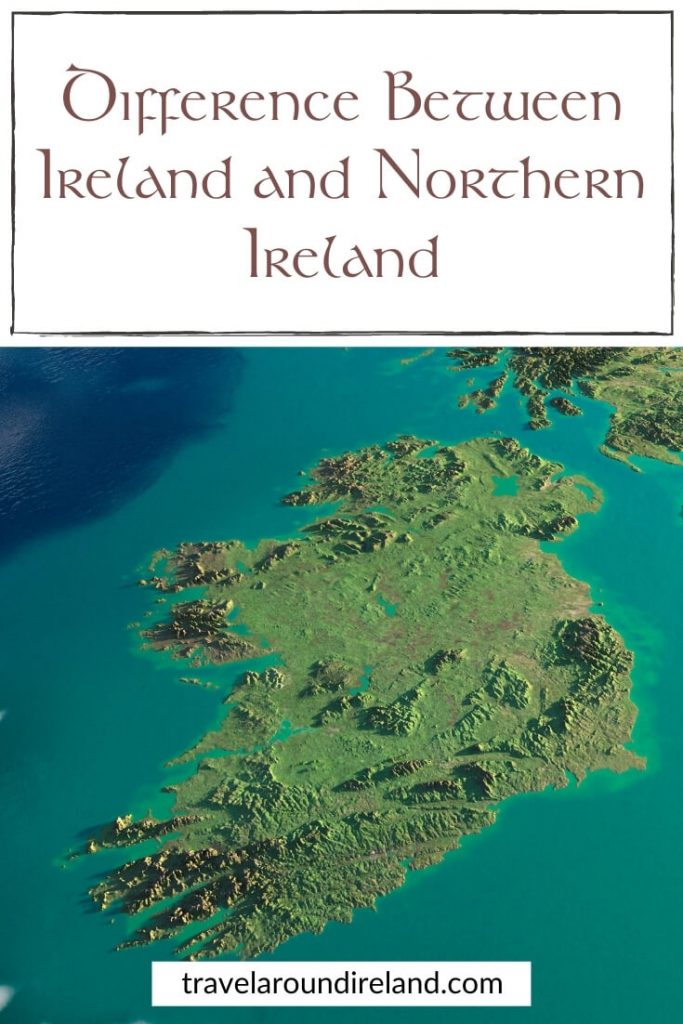

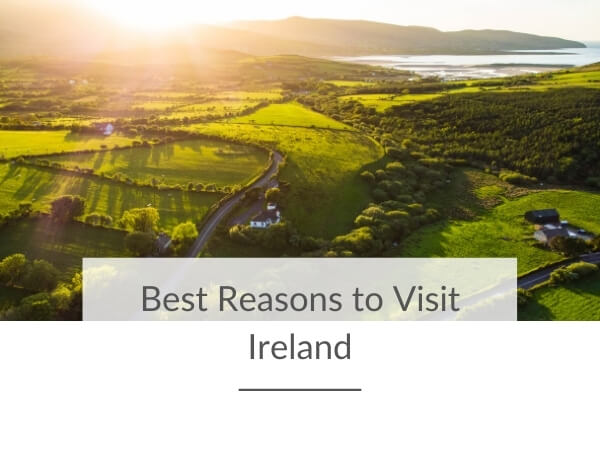
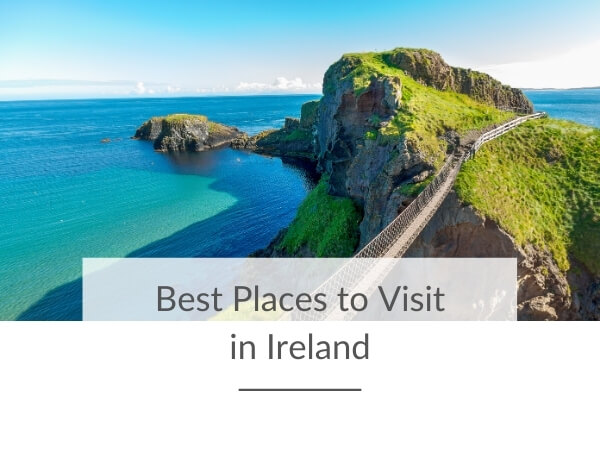
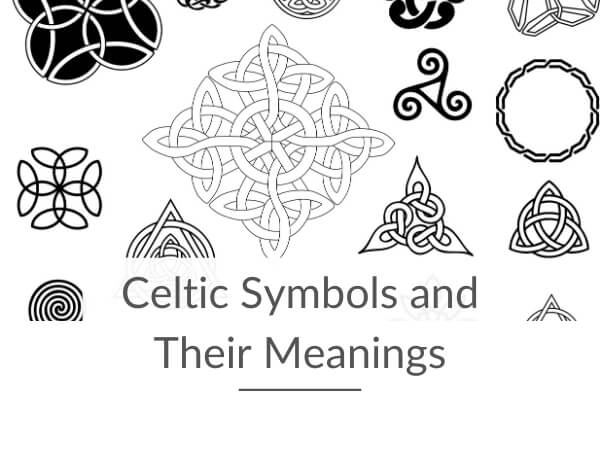
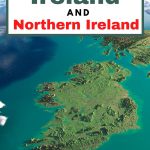
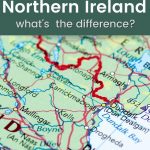
Another case of religion dividing people. Such a pity!
There must be something more than just religion!
Northern Ireland is attempting to have its cake and eat it. You cannot retain the benefit of effective EU membership with no customs border between NI and the Republic, without imposing a customs border between NI and the rest of the UK, which has a different fiscal regime. No amount of negotiations can change this reality. NI should now look to the EU for its primary source of imports, and in time adopt the Euro as its currency.
I am a sri lankan .i have multiple schengen visa . Can i travel to the rrepublic of ireland with schengen visa ?
Can I suggest you consult this website: https://www.irishimmigration.ie/coming-to-visit-ireland/
I cannot answer that question as I do not know if Schengen Visas are accepted for entry into Ireland if coming from a visa-required country.
If you wrote this then you ave no knowledge of what it truly means to be Irish. This is close to saying Ukraine is a part of Russia. Please don’t.
Thank you for your comment Bill. This article is a short and factual explanation, for those who were unaware there were any differences, of why the island of Ireland is not one country, why the split arose (in as short a history lesson as is possible), and what the differences are and how non-natives can spot them on their travels. I am well aware of what it means to be Irish and to imply I am trying to compare Ireland to Ukraine/Russia (on which I am well versed) is nonsensical. As I mentioned in the article, this subject can be quite contentious and is another reason why I kept it as simple and as factual as I could.
Irish people’s sentiment is a significant part the facts too
I completely agree. However, I was trying to keep it as impartial as possible for readers who did not know much about the subject 🙂
Exactly
Thank you Cath for taking your time to explain everything in an accurate way. You did a great job. It’s been interesting to read the differences between the Republic of Ireland vs Northern Ireland, some of the history and so on. I’m from Spain and didn’t know so much about it. Have a good day!
Thank you for this! So… if one is born and raised in NI do they say: I am Irish? Or?
And if one is born and raised in the Rep of Ireland, do they also say: I am Irish? Or?
Those born in the Rep. of Ireland say I am Irish, but it is a personal choice for those born in NI, and depends on many things that I cannot answer on their behalf.
Hello, Could anyone tell me how i could find out if my sons granddad was actually born in Northern Ireland? All that we have to go on is his full name and date of birth and we believe he was born in Belfast. He is now deceased.
Thank you
I’m not sure if you have already tried this but if not, this article/website might be a good starting point:
https://www.nidirect.gov.uk/articles/search-gronis-online-records
If that doesn’t help, you could try to contact the general register office in Northern Ireland, whose contact details are in the below website:
https://www.gov.uk/general-register-office-for-northern-ireland
Cath:
Your summary is excellent, lucid and neutral. I learned much, and I think it is petty to quibble over your well-meaning intents.
Satya, I appreciate your comment.
As mentioned in previous comments, my intent was to explain, in as simple terms as possible, that there are two countries in Ireland and that there are differences between Northern Ireland and the Republic of Ireland. I wanted to try and highlight those differences as simply as possible to anyone that wasn’t aware that Northern Ireland is different from Ireland, and vice versa. It can be a touchy subject and I appreciate you saying my summary was neutral as it can be hard to achieve this where this particular subject is concerned. Thanks again.